6 conclusions from Itzulia Women 2022
A well-matched climbing field, the importance of descending, an assessment of the key teams' performances, and more
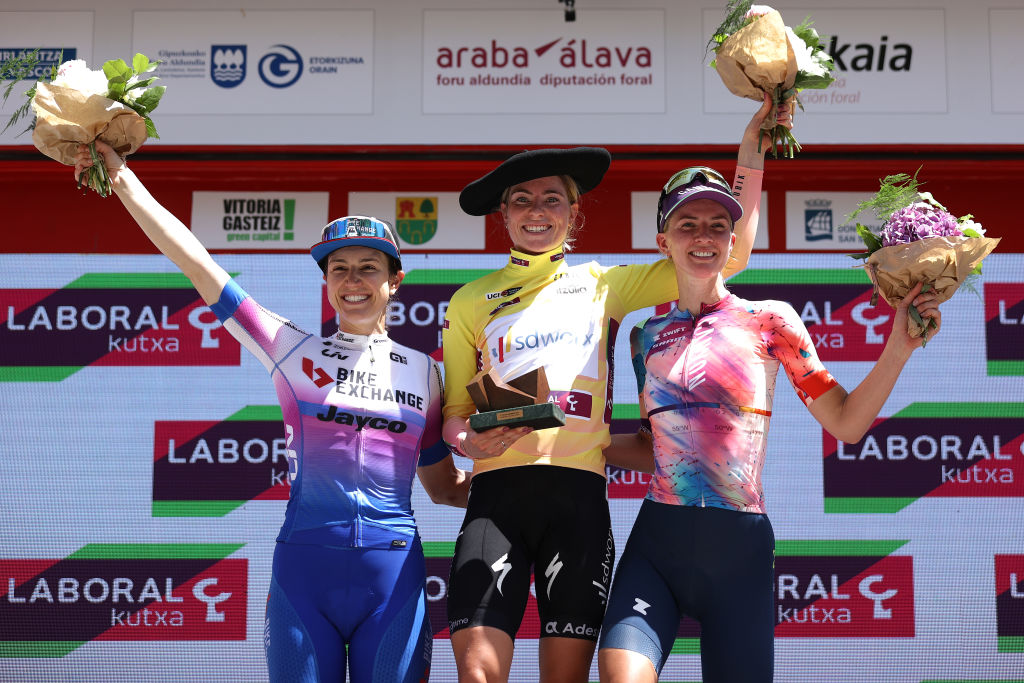
The 2022 Women’s WorldTour stage racing season kicked off this weekend with the inaugural edition of Itzulia Women, a three-day hilly challenge around the Basque Country.
As the first top-level event in a season where the Tour de France Femmes has made stage racing more important than ever, Itzulia was expected to be an important test and a key indicator of where teams and riders are ahead of the summer.
The outcome of the weekend was a Demi Vollering whitewash, with the 25-year-old winning all three stages and the overall to seal the second stage race title of her career. A strong weekend from Canyon-Sram's Pauliena Rooijakkers earned her second overall, whilst Kristen Faulkner continued an impressive return to racing by finishing third.
The results may read like a display of total dominance from Vollering and SD Worx, but there were plenty of other stories playing out and lessons to be learnt from the first big stage race of the season. Here are Cyclingnews’ main conclusions from Itzulia Women.
It’s the best kick that wins
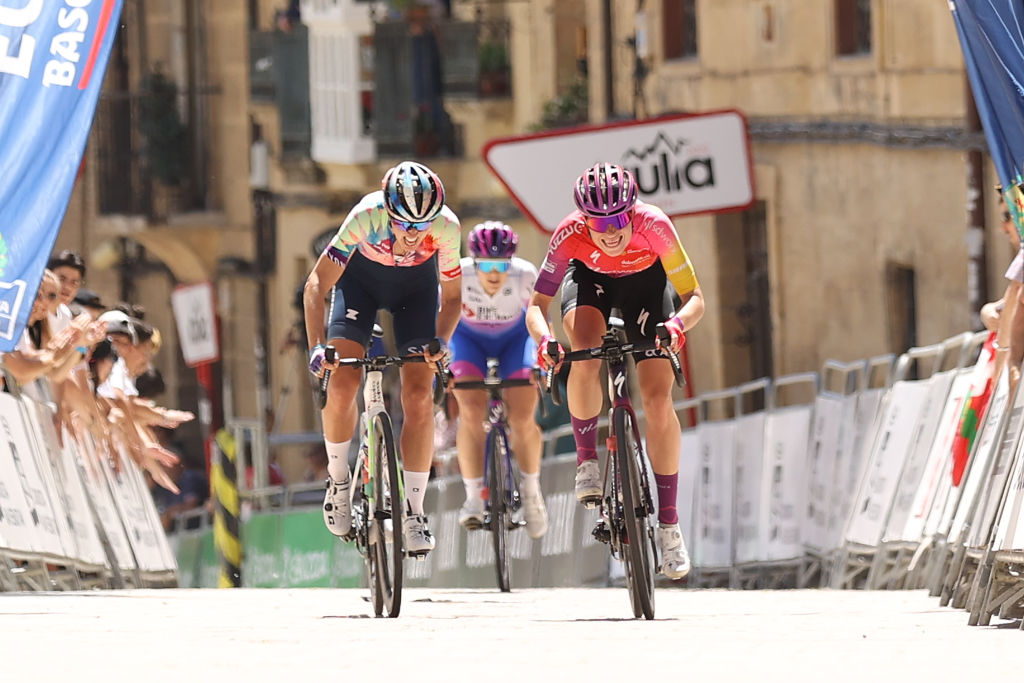
In the absence of the injured Annemiek van Vleuten and retired Anna van der Breggen, the first weekend of stage racing in 2022 was always going to tell us a lot about the current crop of general classification riders and climbers. The main takeaway is two-fold; the group of riders climbing at the top level is bigger than ever; and you need something more than just good climbing legs to win.
Where Van Vleuten and Van der Breggen may have blown up the race by setting an unmatchable pace on a climb and riding away from the field, we saw much bigger groups of riders staying together on the climbs in Itzulia - both a good sign of an increased level in the peloton, and something that has interesting impacts on the racing.
Vollering’s victories came not because she out-climbed her competitors, but because she had a better acceleration in key moments. On stages 1 and 2, Vollering was unable to drop the likes of Rooijakkers and Faulkner on the climbs, instead relying on her better sprint on the punchy finishes to claim victory.
Get The Leadout Newsletter
The latest race content, interviews, features, reviews and expert buying guides, direct to your inbox!
Even on stage 3, where Vollering did make her escape on the final climb of the day, it wasn’t a case of her gradually riding the other climbers off her wheel, but rather putting in one big acceleration just before the top of the climb.
If the peloton’s other climbers have effectively improved their climbing level, the one thing many riders are still hunting for is that ability to put in another burst of power at the end of a hard day.
Descending is key
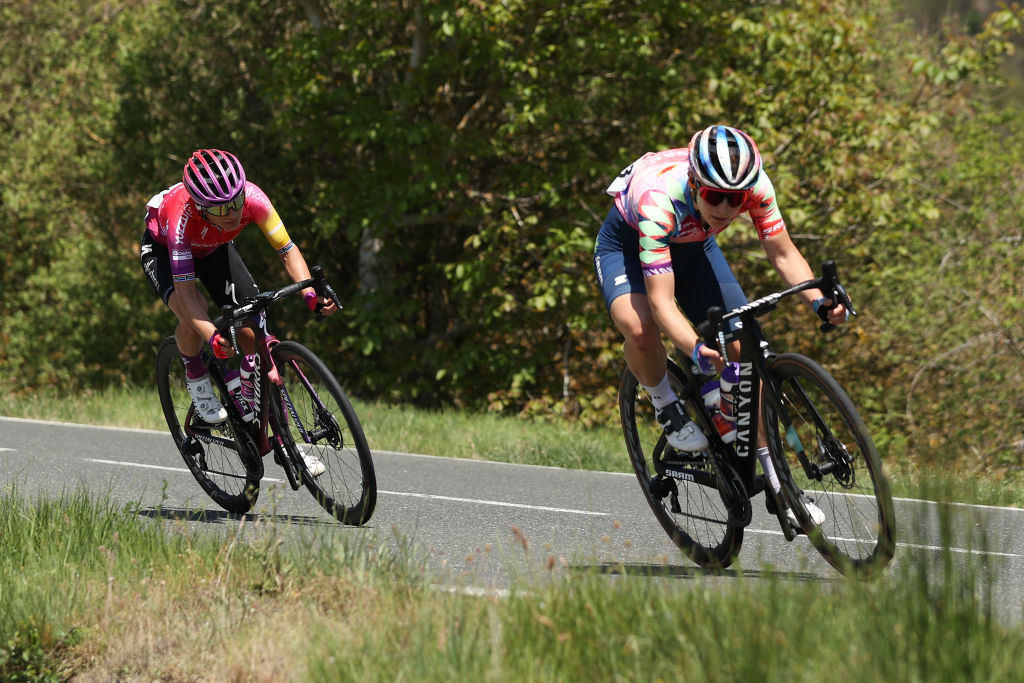
Perhaps owing to the fact we don’t see that many big climbs in many women’s races – or when we do, they’re summit finishes rather than mid-stage – we also don’t have that many opportunities to see the peloton take on long descents. If Itzulia showed us that the climbers are better matched than ever, it also exposed that when it comes to descending, there are still big gaps.
The differences between Demi Vollering confidently navigating the downhills and Pauliena Rooijakkers being dropped and on the brakes were stark and revealed how the descents can affect races.
Though none of the top riders seemed to lose significant time on the descents – every time Rooijakkers was distanced on a descent, she was able to chase back on on the flat – it’s almost certainly true that the less confident descenders spent more energy and mental stress in these sections than they strictly needed to.
What’s more, the race may not have been lost on descents but Vollering win was certainly helped by them. On Sunday, the Dutchwoman didn’t have a huge gap going over the top of the climb, but it was the following descent that allowed her to hold onto her advantage and take her third win of the weekend.
In preparation for the Giro Donne and the Tour de France Femmes, many riders are spending extra time on climbing and even spending significant blocks at altitude, but maybe Itzulia has shown that what some riders need is a descending camp.
If Vollering's there, she's there to win
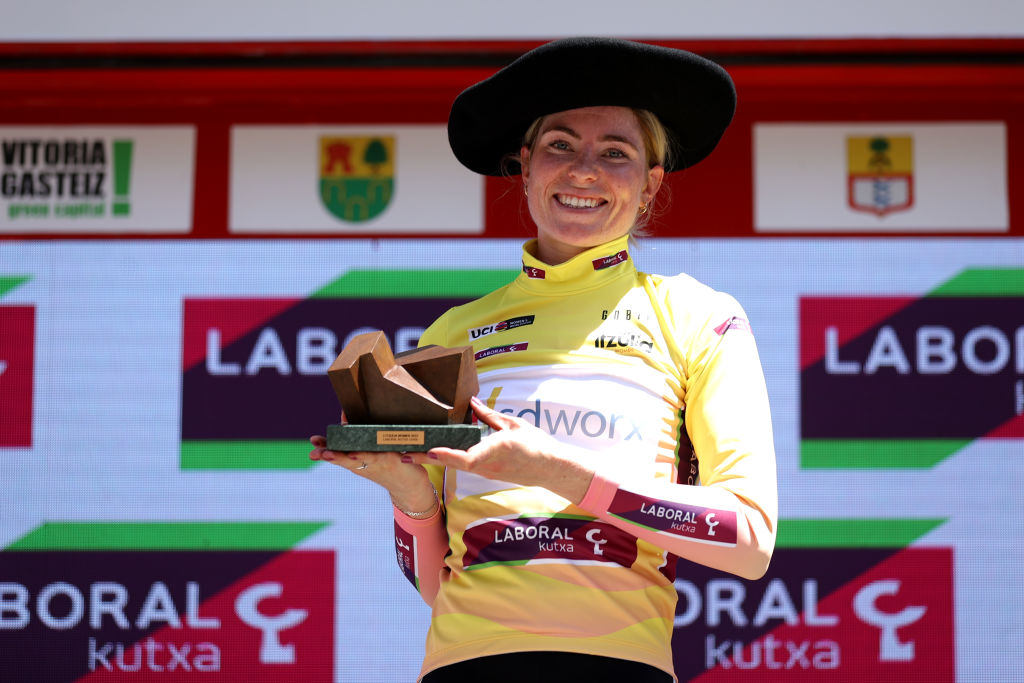
If there were ever any questions over Demi Vollering’s intentions in the stage races between now and the Tour de France Femmes, this weekend delivered the answer: she’s there to win them. And not by playing it safe, but by going on the offensive at every opportunity.
By the end of Sunday’s third stage, Vollering’s overall victory was safe as long as she could stay with main rivals Rooijakkers and Faulkner, and she even had a good chance at beating them in a sprint finish, but instead she attacked to take solo victory. In the vein of her SD Worx predecessor and sports director Anna van der Breggen, Vollering is a rider who is not content with second or third on a stage if she knows she can win it.
The question that Vollering’s approach throws up, though, is what does this mean for her objectives later on in the season? Is she going too hard too early, or peaking too early?
Of course, there’s no way to answer these questions now and we'll have to wait to see how July plays out before we know, but it’s clear that Vollering has little interest in riding conservatively during this block.
SD Worx are still SD Worx
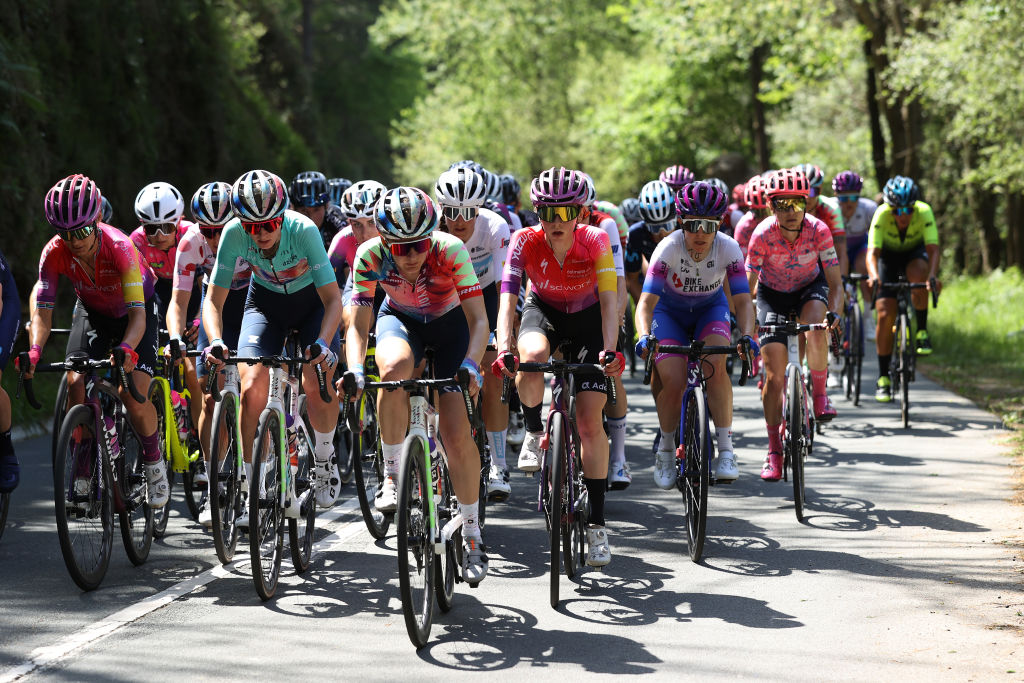
SD Worx entered Itzulia with a reduced roster of just four riders after Marlen Reusser and Lonneke Uneken were taken off their initial team list. But with the way they raced, you would hardly be able to tell they were the smallest team in the pack.
All four of their riders - Vollering, Moolman-Pasio, Shackley and Fisher-Black - were active in the late stages of the race and able to be their to support Vollering when it mattered.
SD Worx’s success has often been put down to their ability to have numbers at key moments, but this weekend showed that even when their numbers are cut, their riders’ quality outranks the benefits of quantity.
But… several teams are coming close
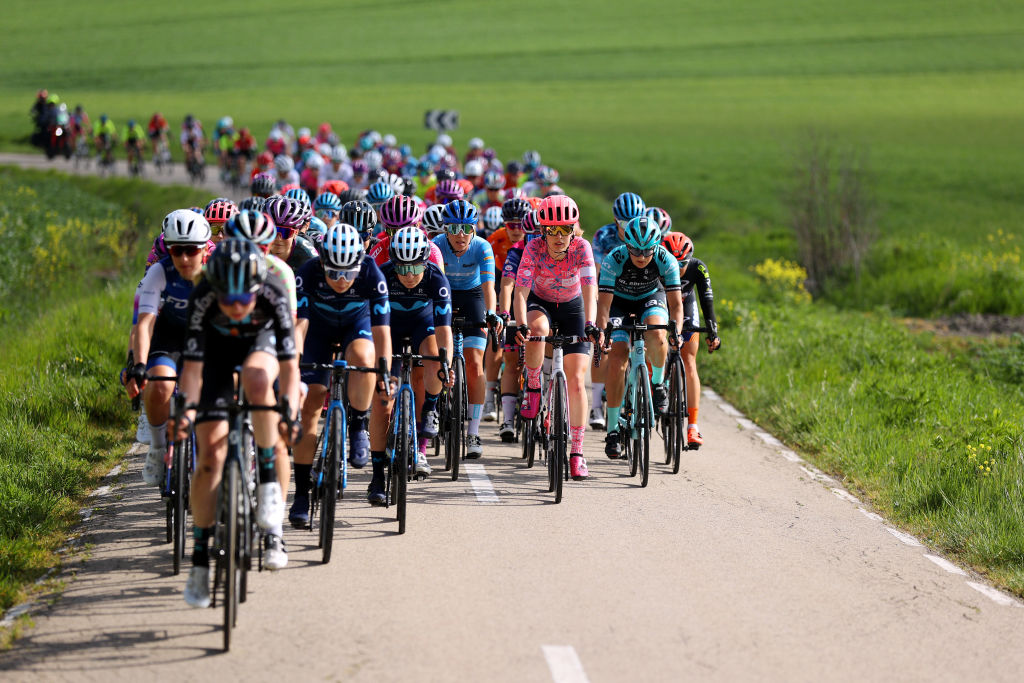
On paper, Vollering’s whitewash of the weekend in the Basque country may read like SD Worx were completely dominant, but in reality many teams made them work hard for their victories.
SD Worx’s signature has often been strength in numbers and regularly being the only team to make the selection with multiple riders, but over the weekend several teams were placing two or three riders into the front group. Canyon-Sram had Rooijakkers and Chabbey well represented all weekend, Veronica Ewers and Krista Doebel-Hickok made a strong duo for EF Education-Tibco-SVB, and DSM’s trident of Labous, Lippert and Mackaij attempted to stamp their authority on the racing.
And it wasn’t just the key moves where other teams were employing the SD Worx approach; in the final general classification, Team DSM placed an impressive three riders in the top, compared to SD Worx’s two, whilst Canyon-Sram, BikeExchange-Jayco and EF Education-Tibco-SVB all had more than one rider in the top-20.
Instead of putting all their efforts behind one rider, teams seem to be coming round to the benefits of playing the numbers game. Of course, no one harnessed these numbers into actually beating SD Worx over the weekend, but it seems the Dutch team may no longer be able to count on being the only team with options in the front group.
Trek-Segafredo missing something
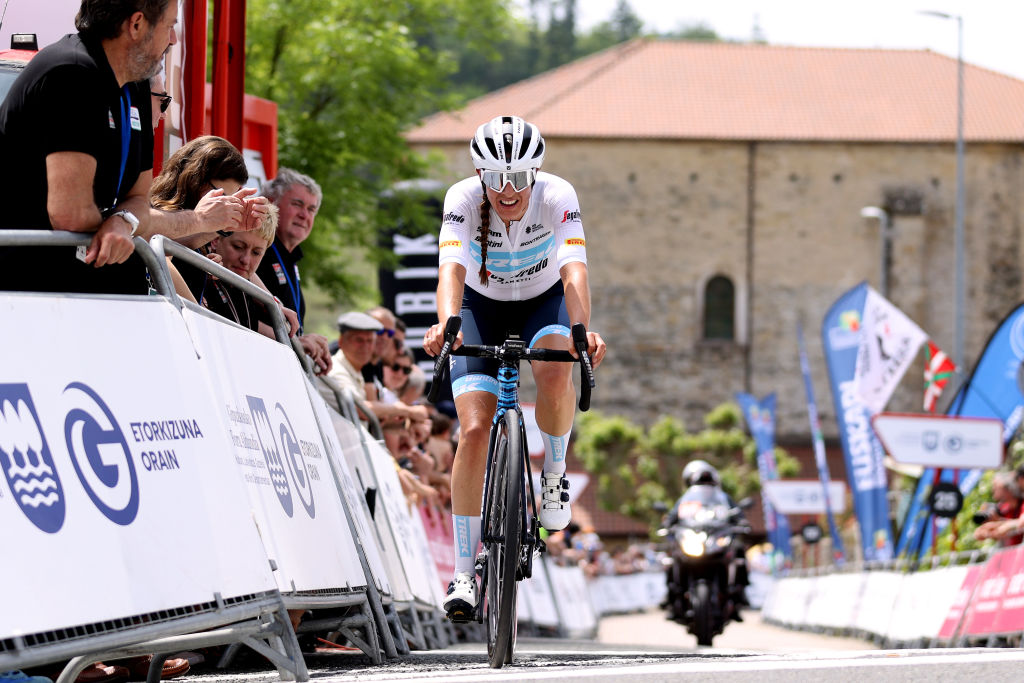
Whilst some teams really showed their strengths this weekend, the one team that may come away slightly disappointed is Trek-Segafredo. After an impressive spring where they were often the team giving SD Worx a run for their money, Trek-Segafredo seemed to be missing something in Itzulia and weren’t quite at the high-level often expected of them.
They achieved one top-10 over the weekend after a strong ride from Shirin van Anrooij to place 5th on Sunday, but their best general classification result was Lucinda Brand in 16th. Though a good rider, Brand certainly isn’t the most obvious GC challenger for a hilly stage race which shows the team maybe came to this race without a top contender for the overall.
Compared to other WorldTour teams, Trek-Segafredo have slightly less climbing power in their roster, and this has only been compounded by recent injuries and illnesses. In a normal season, a rider like Leah Thomas - reigning champion of the Tour de l’Ardeche, one of the toughest stage races on the calendar - would be the perfect leader for these Spanish stage races, but Thomas is still coming back to her best after spinal surgery earlier this year.
Moreover, some of Trek’s riders are skipping certain races in order to focus on targets later on in the season. With the Giro and Tour de France looming, Elisa Longo Borghini has been training at altitude, whilst Audrey Cordon-Ragot went straight from the Classics block into a climbing camp and is expected to be back racing next weekend in Burgos. Though these decisions will hopefully pay dividends when Trek get to July and those big races, the trade off is that they may be slightly off the mark in these smaller races.
Matilda is an NCTJ-qualified journalist based in the UK who joined Cyclingnews in March 2025. Prior to that, she worked as the Racing News Editor at GCN, and extensively as a freelancer contributing to Cyclingnews, Cycling Weekly, Velo, Rouleur, Escape Collective, Red Bull and more. She has reported from many of the biggest events on the calendar, including the Giro d'Italia, Tour de France Femmes, Tour of Flanders and Paris-Roubaix. She has particular experience and expertise in women's cycling, and women's sport in general. She is a graduate of modern languages and sports journalism.